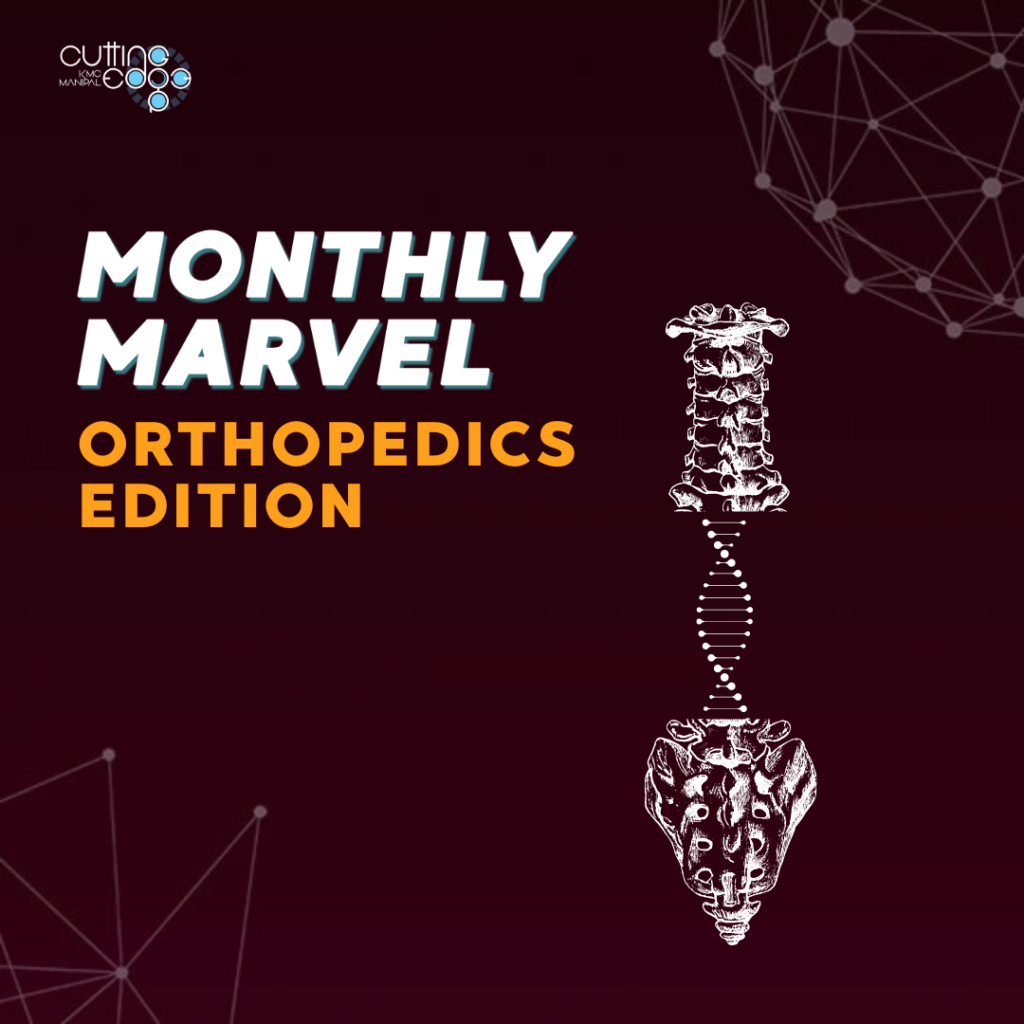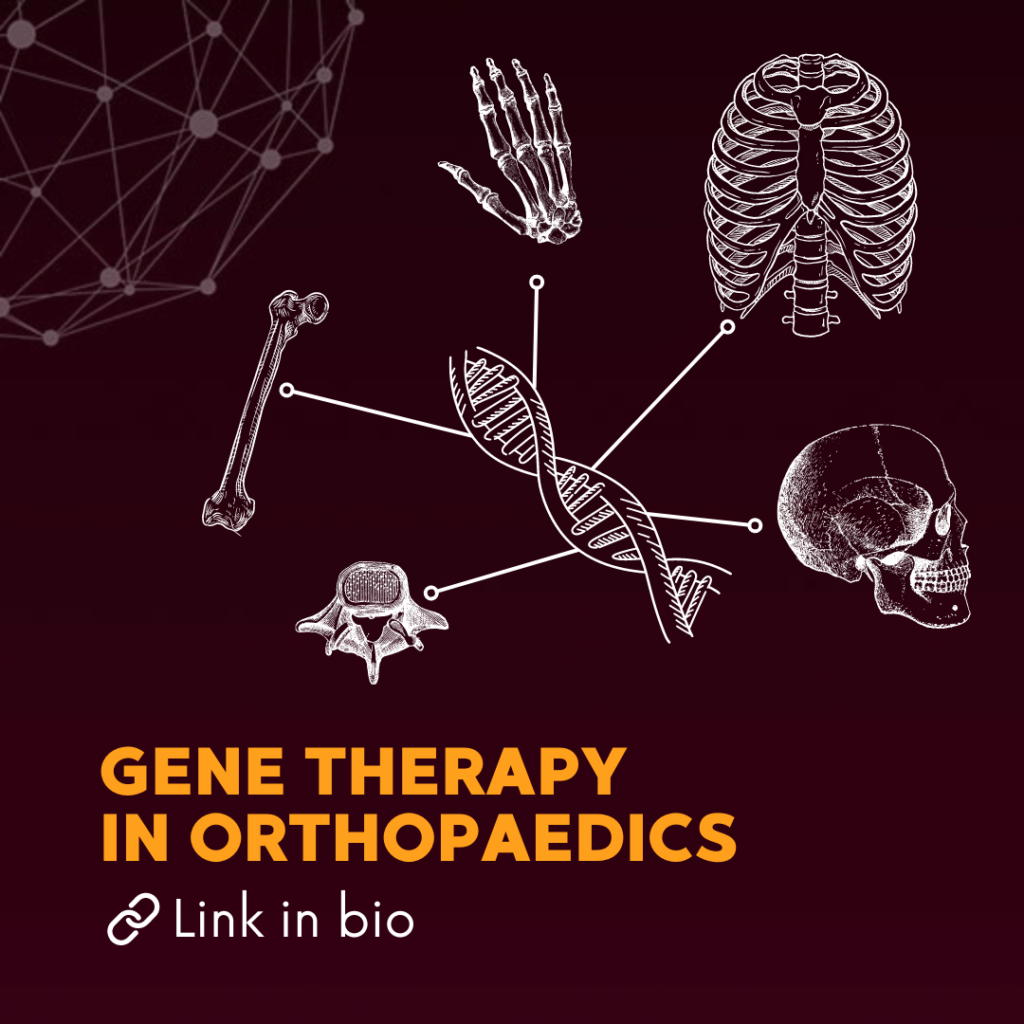Content by: Saanya Chhabra, Saachi Kurudi
Design by: Saachi Kurudi


Bones are one of the few tissues capable of regeneration. Despite this remarkable ability of bone to regenerate, there are many cases where healing is incomplete. For example, in 10% of fractures, bone healing is either very slow (delayed union) or the bone does not heal at all (nonunion). An improved ability to form bone would help tackle this issue while also being useful for the treatment of osteonecrosis and increasing bone stock around prosthetic joints.
The most reliable way to form bone is by autografting bone that is surgically harvested from the iliac crest of the pelvis. Although this method has a high success rate, its usefulness is restricted by the limited amounts of bone available for autografting, as well as the side effects.
This is where Gene therapy comes into the picture.

Which Genes are used?
There are a large number of growth factors that are known to stimulate one or more of the processes involved in osteogenesis and bone healing. Individual growth factors act at different stages of osteogenesis. Thus combinations of different factors promote bone healing more potently than either factor alone.
This has been confirmed in animal models using gene delivery of:
- BMP-2 and BMP-7
- BMP-4 and VEGF
- BMP-4 and transforming growth factor-β (TGF-β)
An alternative approach to the delivery of cDNAs encoding growth factors involves the delivery of transcription factors associated with osteogenesis, such as RUNX2 and osterix (Transcription factor Sp7).
Strategies
- Traditional ex vivo gene transfer
- Lieberman and co, used a recombinant adenovirus vector carrying the cDNA for human BMP2 (Ad.BMP-2) to transduce cultures of bone marrow stromal cells. The transduced cells were seeded onto collagen scaffolds and implanted into critical-sized defects in the femora of rats. All defects healed within 12 weeks of implanting the genetically modified cells, and showed better histological integrity than control defects treated with recombinant human BMP-2.

2. Expedited ex vivo gene transfer
- Rabbit model of spinal fusion. Marrow was withdrawn and the buffy coats isolated. Stromal cells were transduced with a recombinant adenovirus vector encoding LMP-1 and implanted locally during a single operative session. Full spinal fusion occurred in each rabbit receiving the transgene in this fashion. Skeletal muscle and fat have also been evaluated as vehicles for an expedited, ex vivo gene-based technology, known as ‘facilitated endogenous repair’, for the healing of lesions in bone, cartilage and other connective tissues.
3. Direct injection of vector
- It is among the simplest of all gene-delivery strategies. It is based on the technique of injecting the vector directly into the osseous defect which can often be performed percutaneously. Adenovirus vectors have been widely used for this purpose, and success has been reported in rats, rabbits and horses using BMP-2 and BMP-6 as transgenes.

4. Gene-activated matrices
- Gene-activated matrices (GAMs) were developed to provide an off-the-shelf, nonviral, gene-based method for healing bone. In the original GAM formulation, plasmid DNA was incorporated into a collagen sponge and fitted into an osseous defect. The concept was to transfect in situ host reparative cells that infiltrated the GAM after implantation. The transfected cells would then secrete the transgene locally, triggering reparative responses.
Can Regional Gene Therapy Revolutionize Bone Tissue Engineering?
Regional gene therapy is an exciting potential method for bone tissue engineering which has shown considerable promise in preclinical studies. This technique admittedly requires optimization of a number of different elements, including vector choice, delivery method, stem cell tissue source, as well as ideal scaffold material and fabrication method. However, there has been a tremendous amount of research in the past 15 years and significant progress has been made. Given our continually growing and ageing population, the number of critical bone loss cases will continue to rise. Thus, optimising treatment strategies for bone repair is a necessity.
